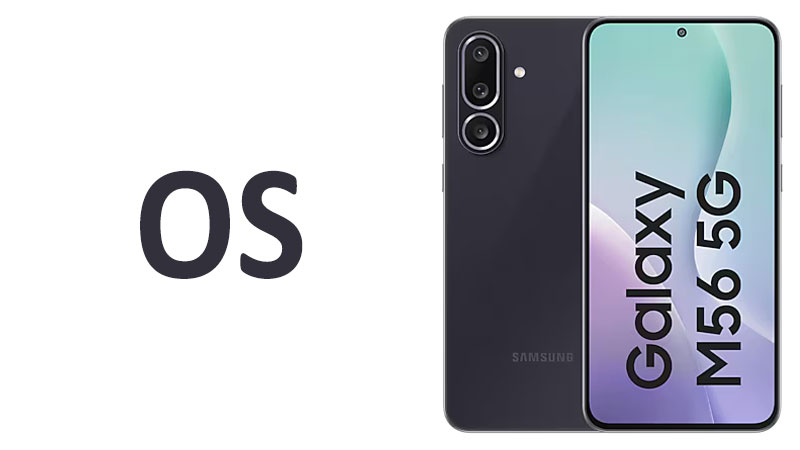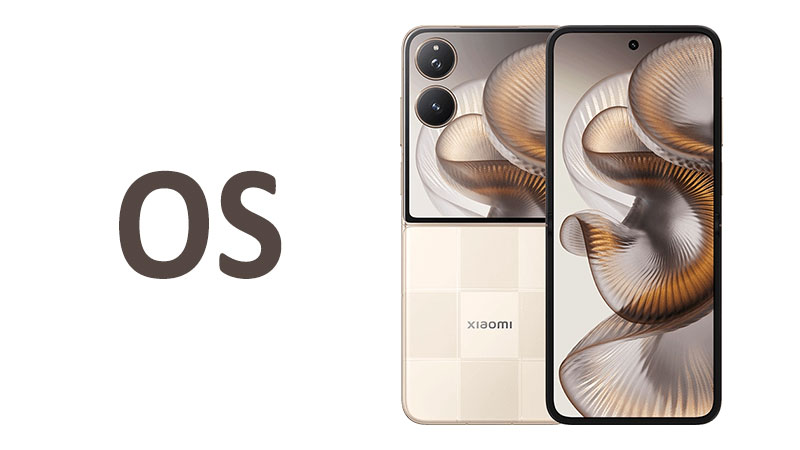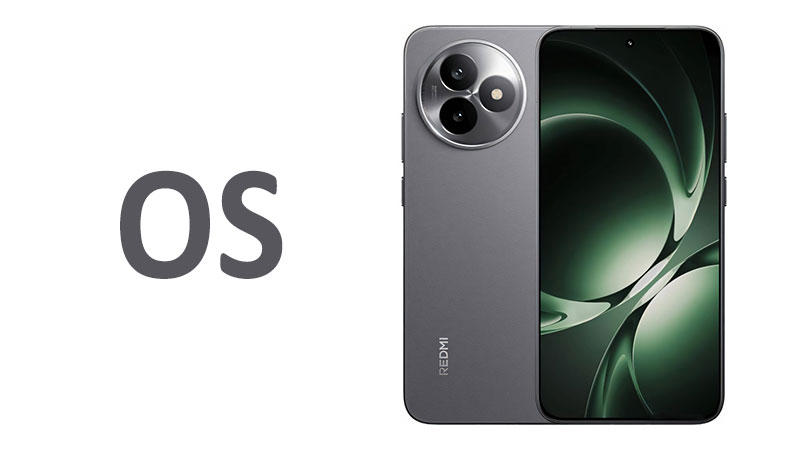The Samsung Galaxy M56 OS stands out immediately in the competitive mid-range market. It launches with the powerful combination of Google’s latest core platform, Android 15, integrated with Samsung’s own highly refined user interface, One UI 7. This pairing creates a feature-rich, efficient, and visually appealing mobile experience. The M56 introduces a significant shift in Samsung’s strategy for its M-series. It provides a software promise previously reserved for more expensive models. This promise centers on unprecedented device longevity.
Samsung positions the Galaxy M56 not just as a device for today, but as a reliable mobile companion for many years to come. Buyers are getting access to cutting-edge security features, substantial performance optimizations, and a wealth of Galaxy AI tools right out of the box. This article explores every aspect of the M56’s operating system. It examines the core Android 15 features and the intelligent personalization brought by One UI 7. We assess how this software package translates into real-world benefits and long-term value for the user. We also provide specialized comparisons and essential buyer considerations.
The Long-Term Commitment: Six Major Android Upgrades
The most revolutionary aspect of the Samsung Galaxy M56 software offering is its long-term update policy. Samsung commits to delivering up to six major Android OS upgrades for the Galaxy M56. This means the phone, which starts on Android 15, will theoretically receive updates all the way up to Android 21. This commitment redefines expectations for the mid-range segment. It offers users superior value and longevity.
Setting a New Standard for the M-Series
The Galaxy M-series traditionally focused on battery life and competitive pricing. It often received fewer major OS updates than the flagship S-series or the premium A-series models. The M56 completely changes this narrative. By offering six major OS upgrades, Samsung now places the M56’s software lifespan on par with some of the most premium smartphones from Google and even some of its own high-end devices.
For comparison, previous M-series phones typically received three to four major Android upgrades. The M56 policy surpasses not only its predecessors but also many direct competitors. Rivals like the OnePlus Nord series or devices from Xiaomi often guarantee only three or four years of support. The M56’s promise is a strong differentiator. It tells consumers they will retain access to the latest security features and cutting-edge user experience updates for nearly a decade. This strategy significantly boosts the appeal of the Galaxy M56.
The Value Proposition of Six Years of Security
Software updates are critical for two primary reasons: new features and security. The Galaxy M56 provides six years of security updates alongside its six major OS upgrades. This extended security coverage is arguably the most valuable aspect of the policy. A phone running older security patches becomes increasingly vulnerable to malware, exploits, and data theft.
The six-year security promise ensures the device remains protected against the latest threats well into the future. For buyers, this translates directly into higher resale value. A device with assured security support is a more attractive option in the second-hand market. Furthermore, this policy aligns with sustainability goals. It allows users to keep their hardware longer without compromising their digital safety. It reduces the frequency of phone replacement, benefiting both the user’s wallet and the environment. Samsung makes a powerful statement about the durability and quality of the M56’s hardware by backing it with such a robust software schedule.
Deep Dive into Android 15: The Core Operating System
The Galaxy M56 runs on Android 15, the foundational layer providing essential performance, security, and connectivity features. While One UI 7 customizes the look, Android 15 brings crucial functionality directly from Google. This version focuses on refining the user experience, boosting privacy, and optimizing hardware performance.
Enhanced Security and Privacy Tools
Android 15 introduces several pivotal security enhancements that bolster the Galaxy M56’s defense mechanisms. One significant feature is Private Space. This allows users to create a separate, authenticated zone on their device for sensitive applications and data. Apps kept in Private Space are hidden from the main app drawer, recent apps view, and notification history. This offers a highly effective way to shield banking, health, or private messaging apps from prying eyes.
Another key addition is the Theft Detection Lock. This proactive security tool uses on-device artificial intelligence to sense when a device is snatched away and immediately locks the screen. This swift response severely limits a thief’s ability to quickly disable connectivity or access sensitive data immediately after the theft occurs. Android 15 provides strong foundational security. It ensures the Galaxy M56 is protected against both digital and physical threats.
Performance and Efficiency Improvements
Android 15 includes several under-the-hood improvements that enhance the everyday performance of the Galaxy M56. A notable addition is App Archiving. Users can now partially remove rarely used applications to free up storage space without losing associated user data. The app icon remains on the home screen, and a quick tap re-downloads the core application files, saving the user from lengthy sign-in procedures. This feature is crucial for mid-range devices where storage management is often a priority.
The operating system also introduces support for 16 KB page sizes. This is a technical optimization designed to improve system efficiency and performance, particularly under heavy load. The Exynos 1480 chipset benefits from these core improvements. They ensure faster app loading times and smoother multitasking capability on the Galaxy M56. Furthermore, Android 15 includes better battery health monitoring features, providing users with clearer insights into their phone’s long-term endurance.
Multimedia and Camera Upgrades
The software features in Android 15 also positively impact the Galaxy M56’s multimedia and photography capabilities. The Low Light Boost feature is a camera extension that greatly improves preview visibility in extremely dark conditions. It automatically adjusts exposure, making it easier for users to frame shots or scan QR codes when lighting is poor. This works alongside the M56’s OIS-equipped 50-megapixel main camera sensor.
Android 15 also introduces Partial Screen Recording. This useful tool allows users to record only a selected portion of their screen or the content of a single application. This prevents accidental recording of sensitive information found in the notification bar or other background apps. It is a major benefit for creating tutorials, sharing game clips, or troubleshooting issues professionally. Audio sharing is another welcome feature. It enables the streaming of audio to two pairs of Bluetooth headphones simultaneously. This is perfect for sharing music or videos with a friend while commuting.
One UI 7: Samsung’s Intelligent Customization Layer
Samsung overlays Android 15 with its proprietary user interface, One UI 7. This interface transforms the base operating system into a uniquely Samsung experience. One UI 7 is known for its refinement, focus on one-handed operation, and now, heavy integration of Galaxy AI features, making the M56 feel highly modern.
The Galaxy AI Revolution on M56
One UI 7 deeply integrates artificial intelligence, moving many powerful features from the premium S-series line to the mid-range Galaxy M56. These Galaxy AI tools significantly enhance productivity and creativity.
The Professional Writing Assistance feature is one such highlight. It allows users to quickly correct spelling and grammar, change the tone of their text, or summarize long emails within apps like Messages or Notes. This makes communication faster and more polished. Another valuable tool is the Call Transcript and Summary feature. It records phone conversations and instantly generates a text transcript. It then provides an AI-generated summary of the key discussion points, which is invaluable for professional or complex personal calls.
Creative AI features also come to the Galaxy M56. Drawing Assist allows users to start with a simple sketch or text prompt and then uses AI to generate refined and varied images. The Audio Eraser tool is a powerful video editing function that removes unwanted sounds like wind noise or background chatter from videos. These sophisticated tools elevate the creative potential of the M56.
Design, Visual, and Workflow Evolution
One UI 7 brings a refined aesthetic and improved workflow to the Galaxy M56. The design is cleaner, featuring softer edges, more curves, and circular elements in buttons, menus, and notification sliders. This provides a more polished and modern visual experience compared to earlier One UI versions.
A major structural change separates the Quick Settings and Notification panels. Pulling down once shows primary notifications. Pulling down further opens the dedicated Quick Settings panel. This separation improves clarity and one-handed accessibility. The interface consistently emphasizes one-handed use, shifting key interactive elements towards the bottom of the large 6.73-inch display. This is a practical design improvement for the M56’s large form factor.
The introduction of the Now Bar, an intelligent widget or bar on the Lock screen, provides instant, contextual information. It shows live notifications, media controls, and quick access to essential features like the stopwatch without requiring the user to fully unlock the device. Additionally, Samsung integrates Google Gemini access. Users can long-press the side button to quickly launch Google Gemini for cross-app actions and immediate AI assistance.
Specialized Comparison: One UI 7 vs. One UI 6.1
One UI 7 represents a significant jump from its predecessor, One UI 6.1, especially in the mid-range context of the Galaxy M56. While One UI 6.1 focused on minor performance gains and interface tweaks, One UI 7 aggressively pivots towards intelligent functionality.
The key difference lies in the density and accessibility of AI features. One UI 7 makes Galaxy AI a system-wide feature, not just a set of isolated apps. The visual changes are subtle but contribute to a more cohesive feel. The improved management of Quick Settings streamlines daily interaction. Crucially, the efficient integration of Android 15’s new security features, like Private Space, through the familiar One UI structure makes advanced security simple for the average user to adopt. The software package on the M56 is thus significantly more futuristic and intelligent than that of its immediate M-series predecessors.
Analyzing the M56 Software Ecosystem: Pros and Cons
Evaluating the Galaxy M56 requires an honest look at the advantages and disadvantages of its powerful, yet complex, software ecosystem. Buyers must understand what this operating system commitment entails.
Pros of the M56 Software Suite
The primary advantage is the exceptional longevity. Six years of major OS upgrades and security patches guarantees the device’s relevance far longer than most competitors. This provides immense peace of mind. The integration of Galaxy AI features, usually reserved for flagship phones, offers significant productivity and creativity boosts. Users gain access to advanced tools like writing assistance and video audio editing at a mid-range price point.
The combination of Android 15’s efficiency improvements and One UI 7’s refined 120Hz-optimized animations ensures smooth, responsive daily usage. Features like App Archiving and Partial Screen Recording provide practical solutions for storage management and enhanced privacy. The overall aesthetic of One UI 7 is modern and highly polished. It offers a consistent user experience across the entire Samsung ecosystem.
Cons and Potential Challenges
Despite the overwhelming positive aspects, a few potential drawbacks exist. Samsung’s One UI, while feature-rich, has historically been criticized for containing more pre-installed applications, often referred to as bloatware, than stock Android. While the M56 aims for efficiency, the volume of pre-loaded Samsung and Microsoft applications can be bothersome to minimalists.
Secondly, while the commitment to six years of updates is strong, Samsung typically prioritizes its flagship S-series for the initial, immediate rollout of new Android versions. Galaxy M56 users might experience a slight delay in receiving the next major update compared to S-series owners. This is a minor trade-off for the M-series pricing structure. Finally, some of the advanced Galaxy AI features may require an active Samsung or Google account and might rely on cloud processing, which could impact data usage or overall speed depending on network connectivity. The core functionality, however, remains robust.
Essential Buyer and Reader Considerations
Anyone considering the Samsung Galaxy M56 must understand how the software and hardware work together. The software longevity promise is only as good as the underlying hardware performance.
Processor Synergy: Exynos 1480 and the Software
The Galaxy M56 is powered by the Samsung Exynos 1480 chipset, built on a power-efficient 4nm process. This processor is engineered to handle the demands of Android 15 and One UI 7. The 1480 is specifically optimized to manage the complex, on-device computations required by the Galaxy AI features. Performance is key. The efficient Exynos chip ensures that advanced features like live translation and photo editing run smoothly without excessively draining the 5000mAh battery. The smooth 120Hz display is useless without the processing power to back it up, and the Exynos 1480 capably delivers the necessary frame rates and responsiveness. The hardware and software package is carefully balanced for sustained, high-quality performance.
Software Longevity vs. Hardware Lifespan
The promise of six years of OS support is a compelling reason to purchase the M56. However, readers should consider the natural lifespan of other components. While the software will stay current, components like the battery and the physical casing will still age. The M56 includes 45W Fast Charging support and a robust 5000mAh battery. These features suggest the phone is designed to physically endure the promised six-year software cycle. The long software support encourages users to utilize battery replacement services halfway through the device’s life. This maximizes the value extracted from the phone. The combination of durable hardware and cutting-edge software updates creates a truly resilient device.
Competitive Edge: Software vs. Hardware
The Galaxy M56 faces strong competition from devices like the iQOO Neo 10R and the Motorola Edge 60 Fusion, which often boast slightly faster charging speeds or larger batteries. The M56’s competitive edge, however, is not purely hardware-based. It resides almost entirely in the software commitment. While a competitor might offer a faster initial processor, the M56 offers six years of guaranteed access to the newest security protocols, AI innovations, and Android features. This software guarantee is a decisive factor for users prioritizing long-term security and utility over marginal differences in peak performance benchmarks. The M56’s software is the anchor that maintains the phone’s competitive relevance over time. This makes it an excellent choice for pragmatic buyers.
Conclusion: Making an Informed Decision
The Samsung Galaxy M56 OS, defined by Android 15 and One UI 7, presents an exceptionally strong case for the mid-range buyer. The core strengths are clear and impactful. These include the deep integration of productivity-enhancing Galaxy AI features, the robust security provided by Android 15’s Private Space and Theft Detection Lock, and a visually improved, highly functional One UI 7 interface. The M56 experience is polished, modern, and efficient.
Ultimately, the unprecedented commitment to providing up to six major Android OS upgrades and six years of security updates seals the deal. This promise transforms the Galaxy M56 from a standard mid-range phone into a high-value, long-term investment. Buyers seeking device longevity, guaranteed security, and continuous access to the newest software features should confidently consider the Samsung Galaxy M56. The phone establishes a new, higher standard for sustainable smartphone ownership. It is an informed choice for any consumer.
Frequently Asked Questions (FAQ)
What version of Android does the Samsung Galaxy M56 launch with?
The Samsung Galaxy M56 launches running the latest version of Google’s operating system, Android 15.
How many major Android updates will the Galaxy M56 receive?
Samsung has committed to providing the Galaxy M56 with up to six major generations of Android OS upgrades.
Does One UI 7 include the advanced Galaxy AI features on the M56?
Yes, One UI 7 on the M56 includes flagship Galaxy AI features such as Writing Assist, Call Summary, and Drawing Assist.
How long does Samsung promise security updates for the M56?
Samsung promises to support the Galaxy M56 with up to six years of regular security patches and vulnerability fixes.
What is the purpose of the new Private Space feature in Android 15 on the M56?
Private Space allows the M56 user to create a password-protected, separate area on the phone to hide sensitive applications and data from the main user interface.



